Pelodytes punctatus
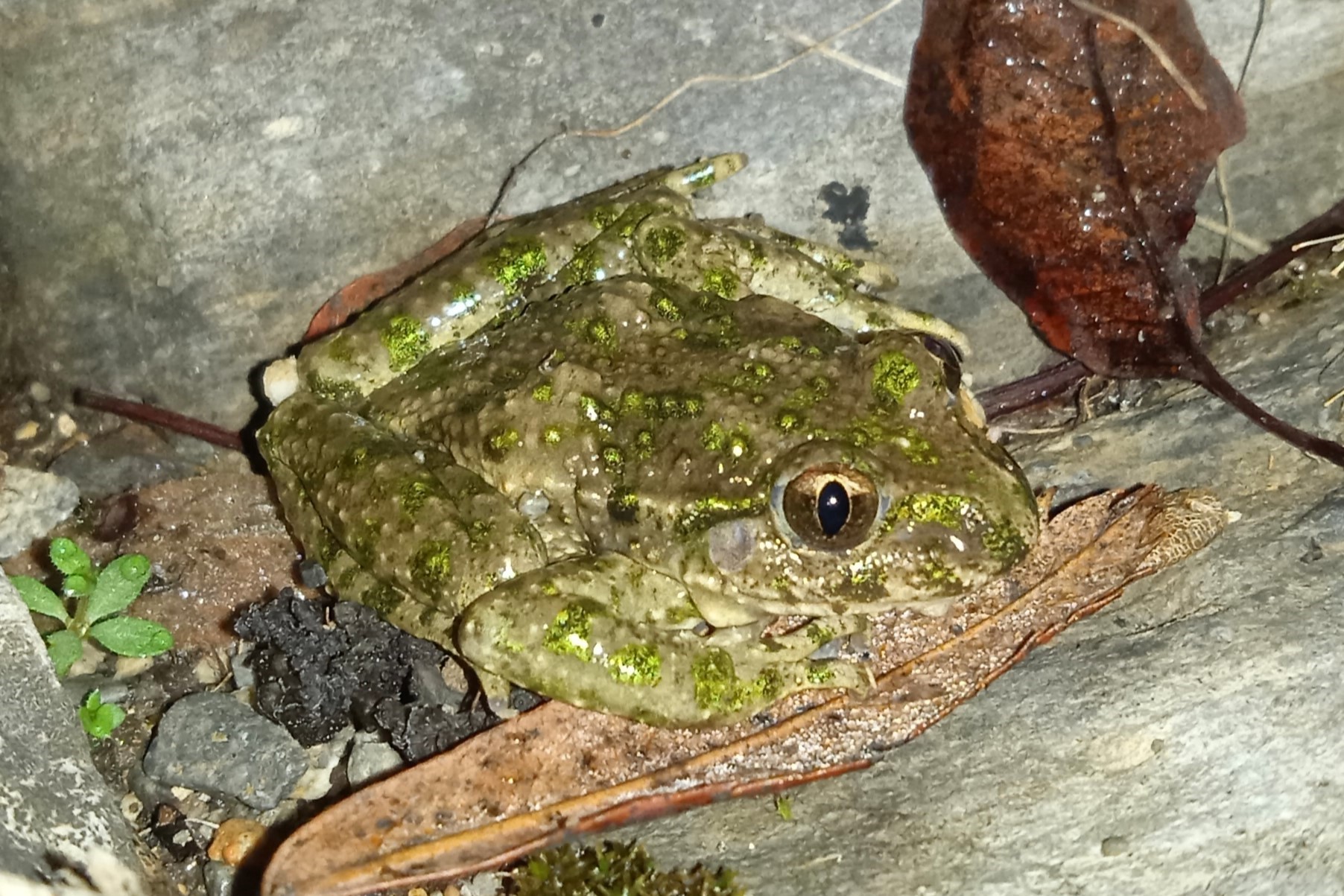

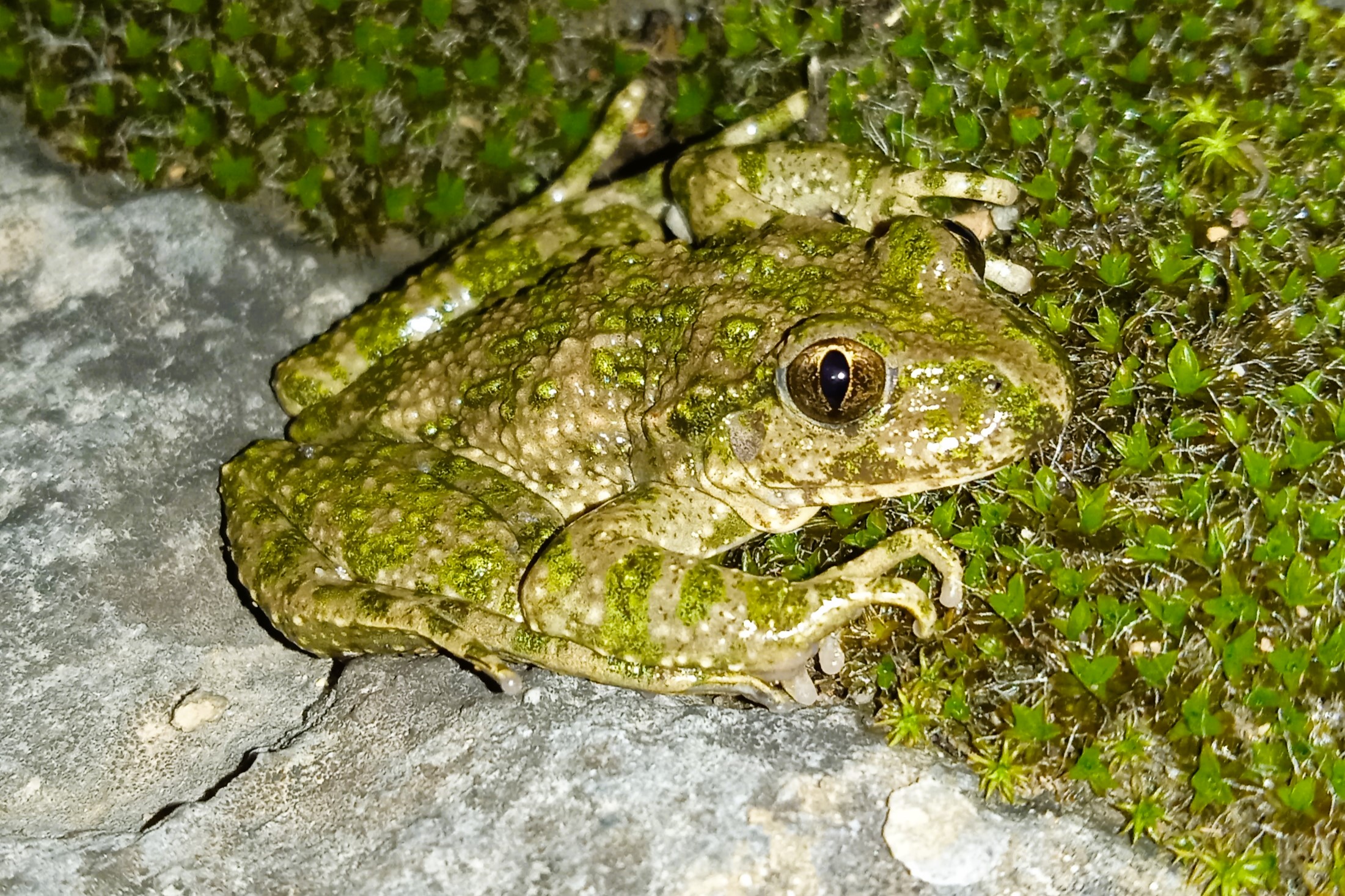
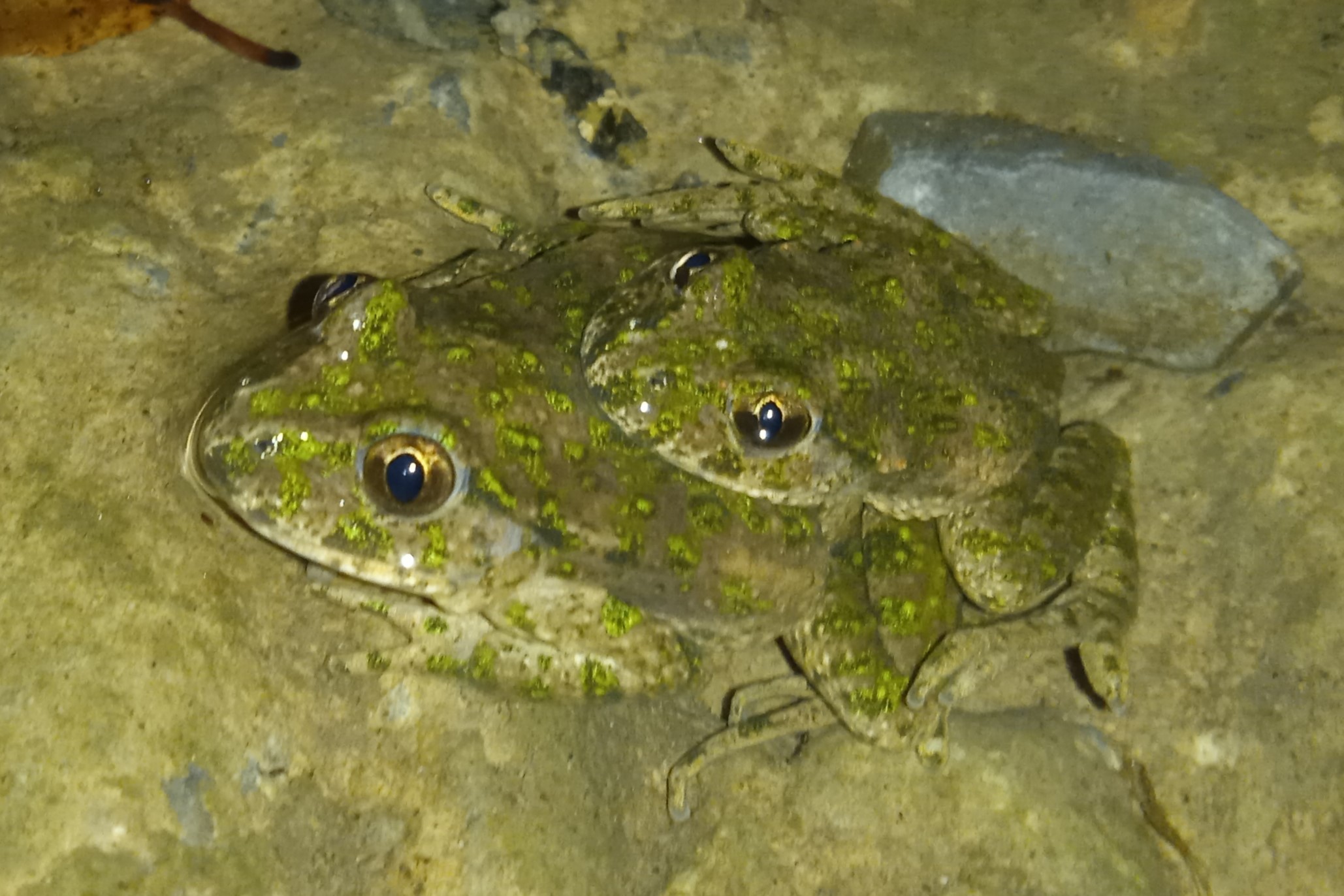
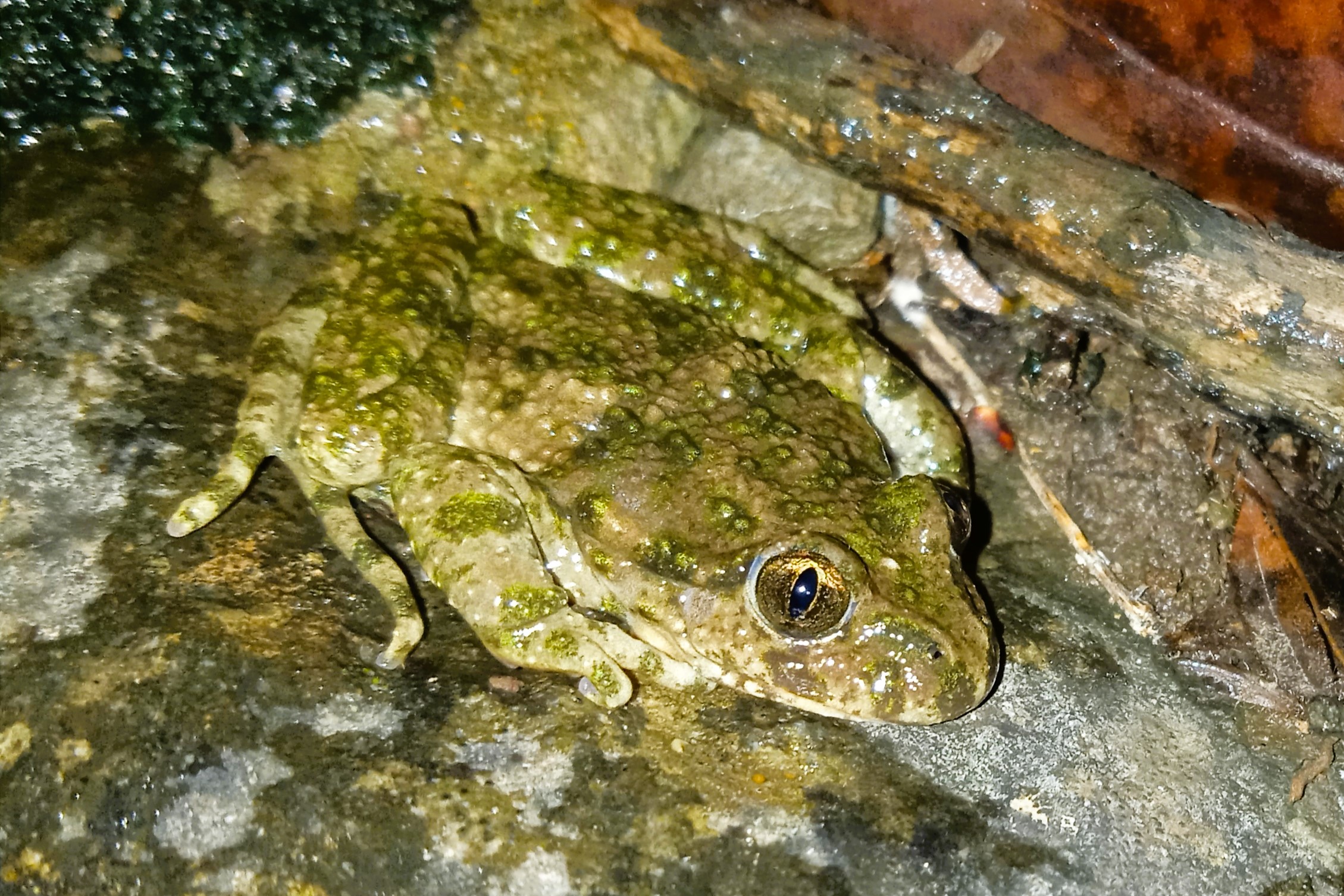

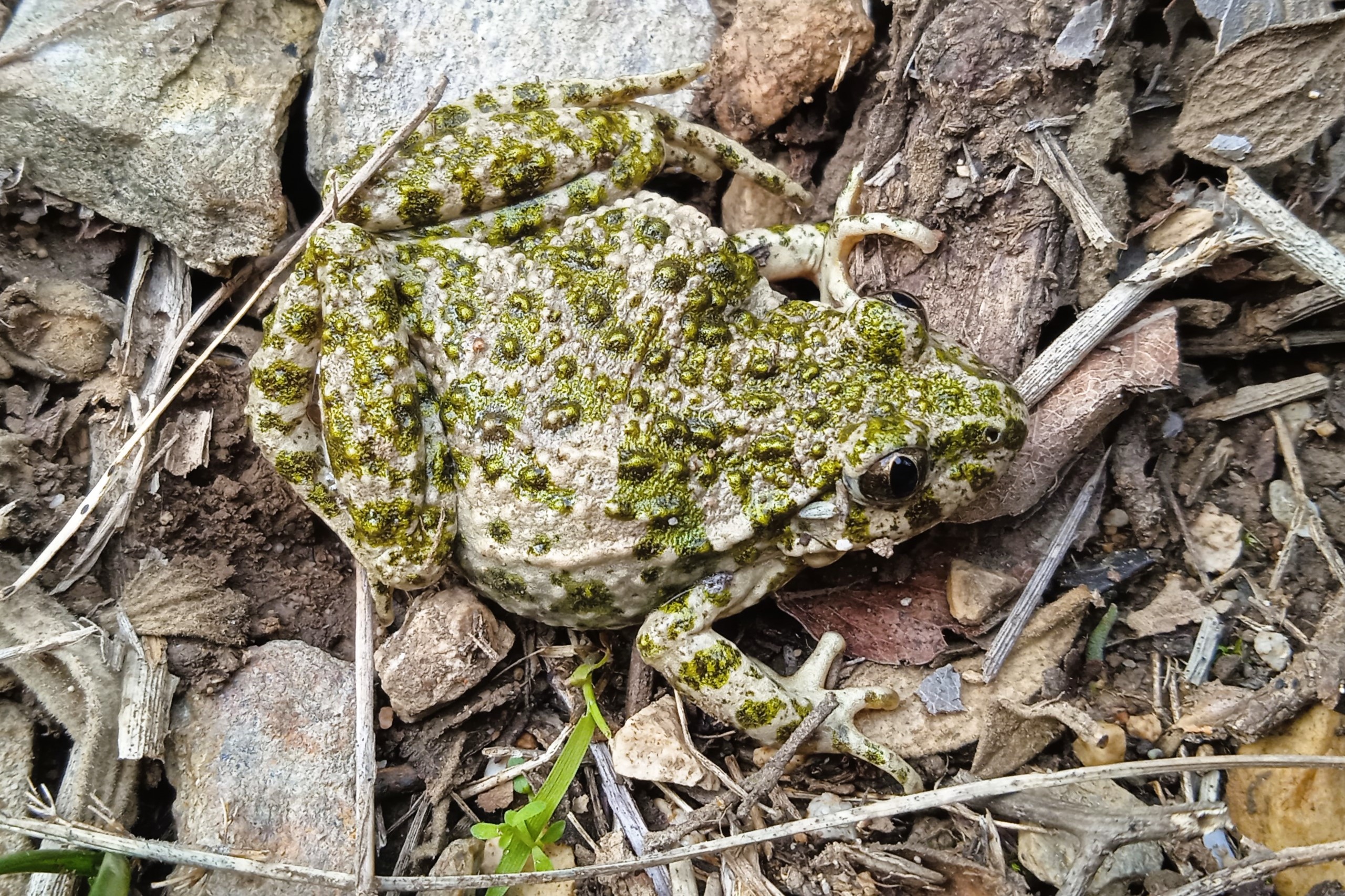
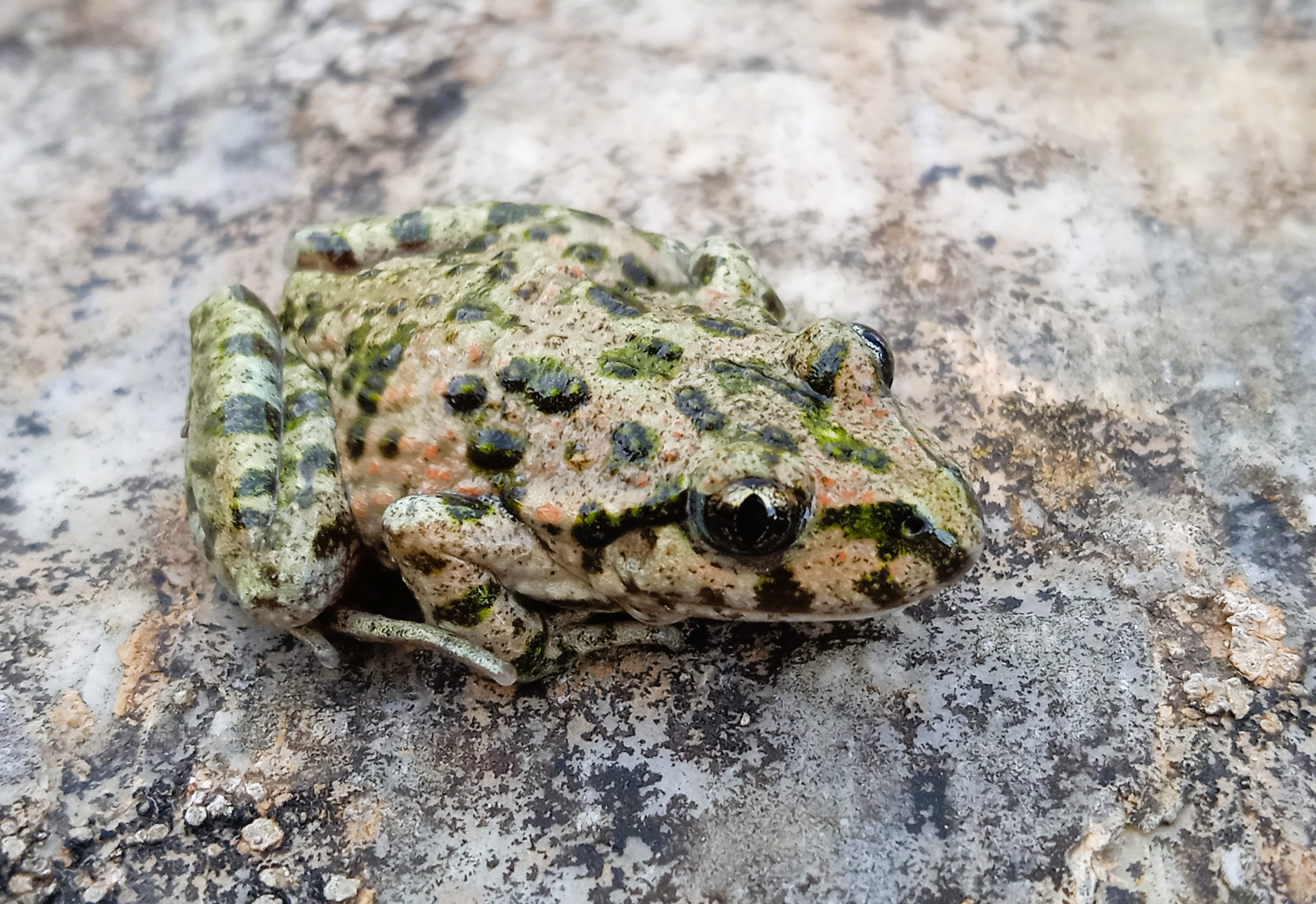
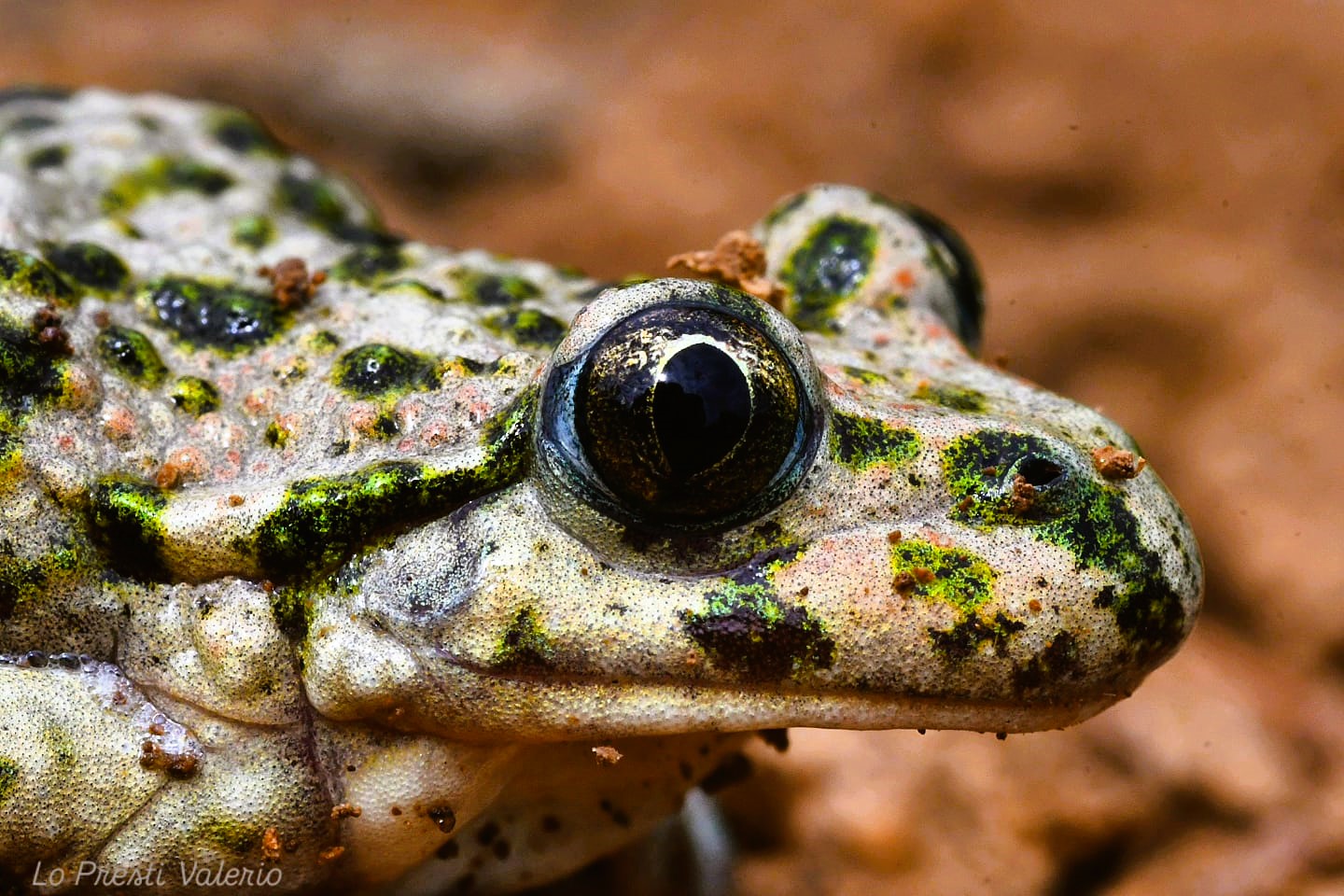
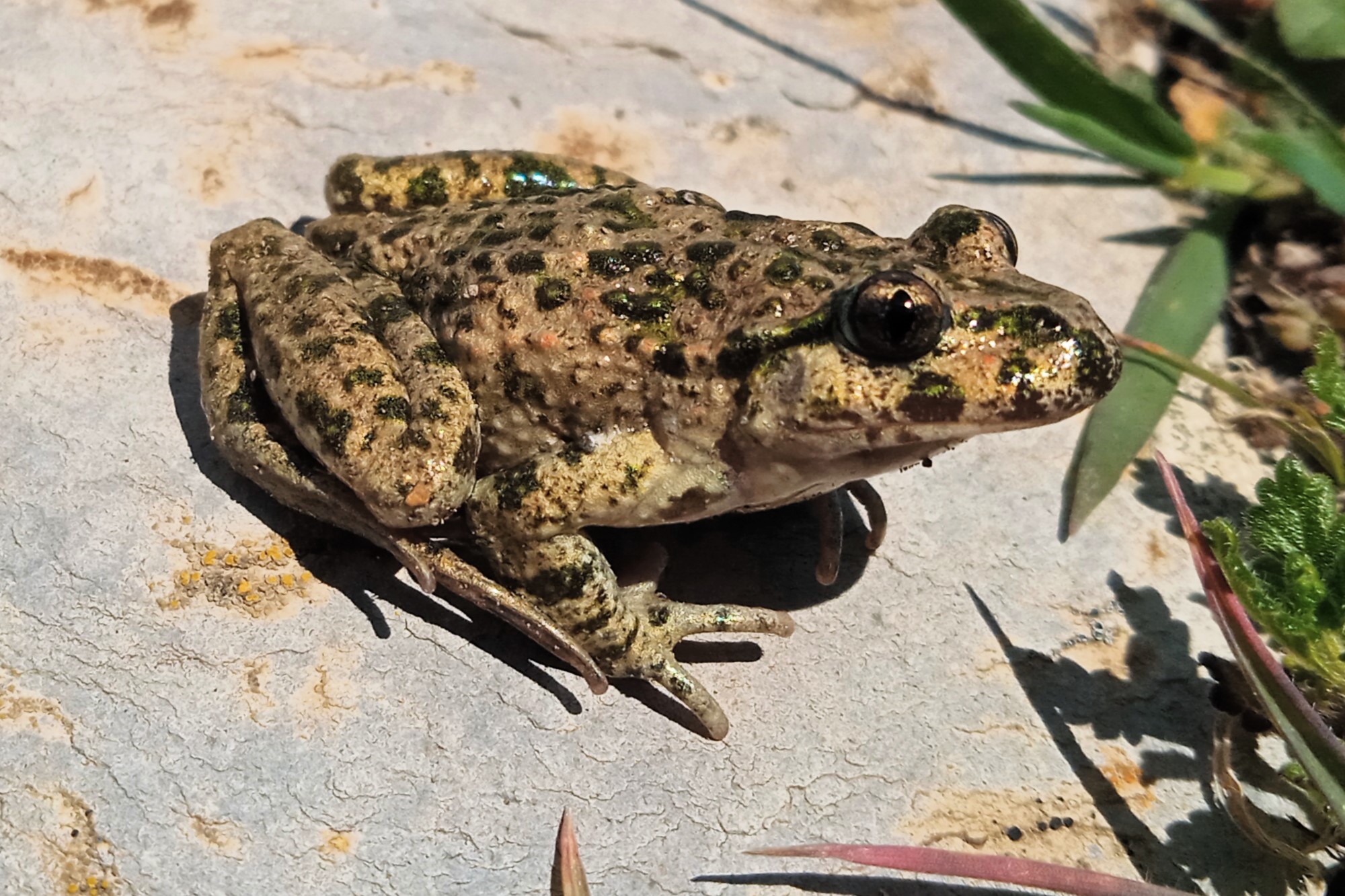
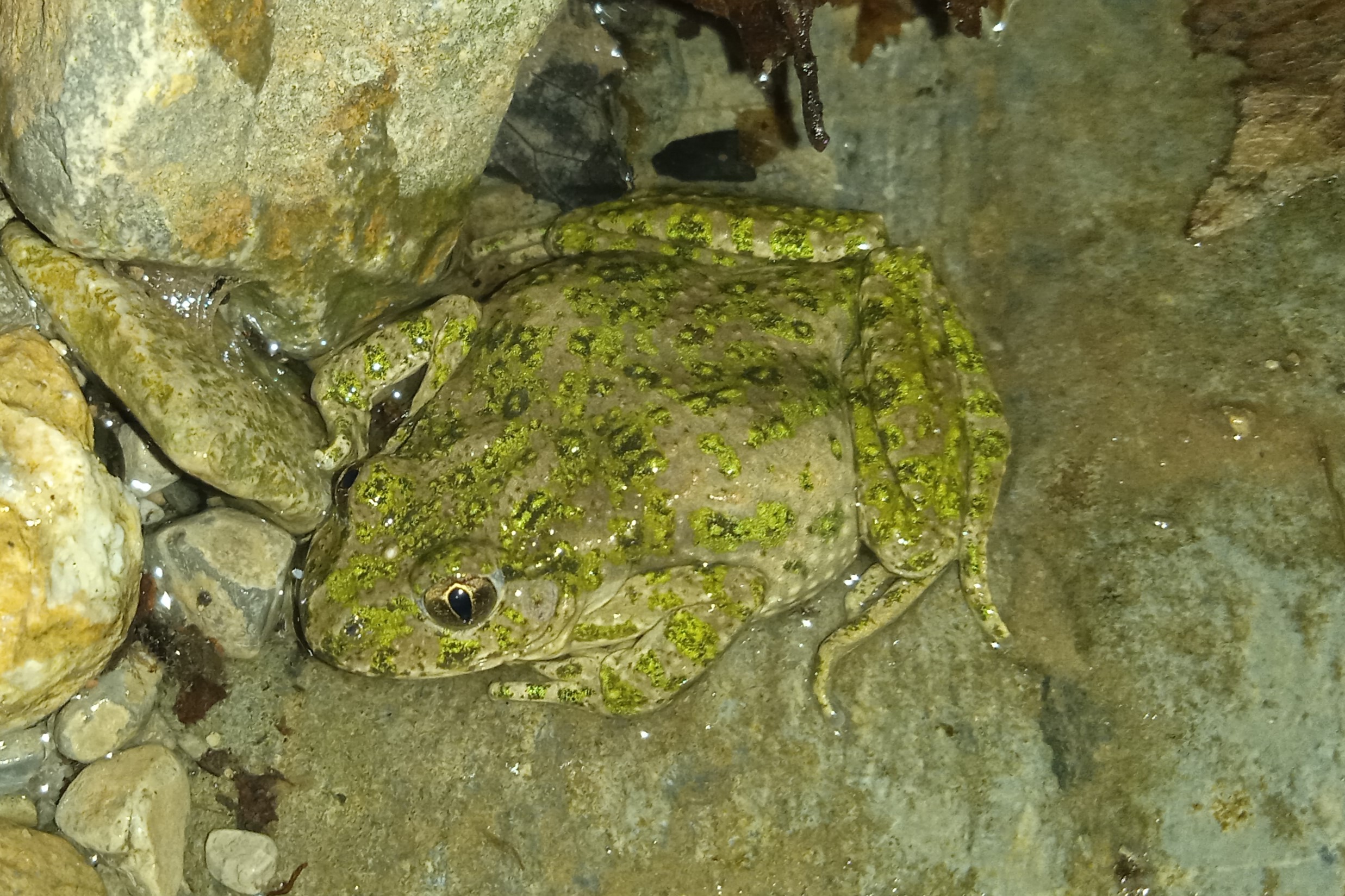
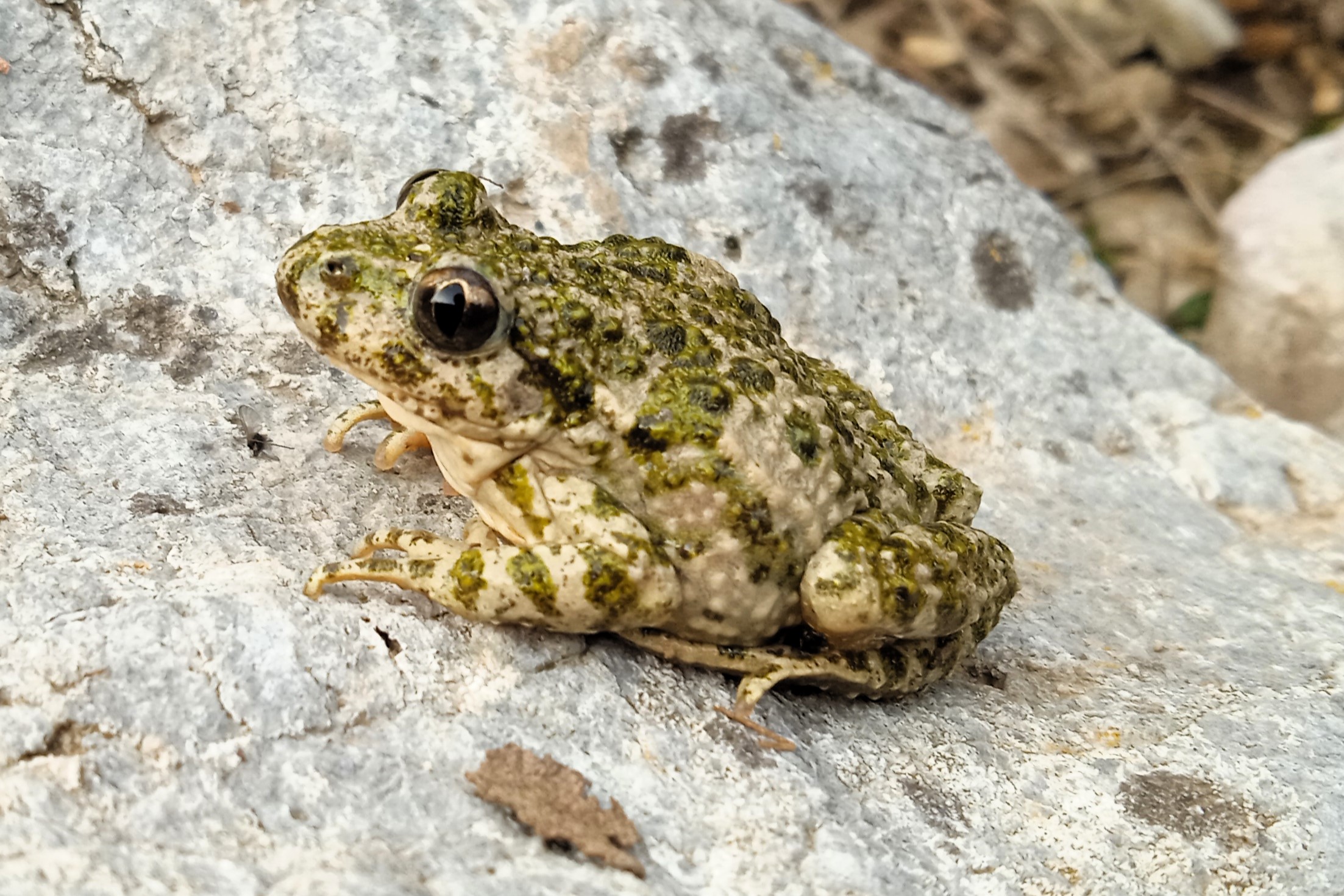
Amphibia → Anura → Pelodytidae → Pelodytes → Pelodytes punctatus
Granoûglia, Baggettu
The Common Parsley Frog is a small-sized amphibian, with a slender and agile body, prominent eyes with vertical pupils, and a back covered in irregular warts, characterized by a gray-green base color sprinkled with bright green spots that evoke the appearance of fresh parsley.
This feature gives it, also internationally, the curious nickname of “parsley frog.”
It almost never exceeds 2 in (5 cm) in length; the head is flattened, the tympanum is not very distinct, and the hind legs have thin, slightly webbed toes.
In males, during the breeding season, dark nuptial pads develop on the arm, forearm, chest, and first two fingers.
The tadpoles have a brownish-gray coloring and, in the last stages of growth, shift to a lighter and more uniform coloration.
They can reach 2.4 in (6 cm) if they overwinter, completing metamorphosis in spring.
During the breeding season, the call of the males – a metallic and subdued sound, often emitted underwater and resembling a tinkling or, more metaphorically, the "squeak of a shoe sole", according to a historical description by Benedetto Lanza – characterizes the nights near small bodies of water; females sometimes respond with soft vocalizations.
Pelodytes punctatus is the only species of the genus present in Italy, and occupies, with fragmented populations, the western and central sector of Liguria (provinces of Savona and Imperia) and part of southern Piedmont (provinces of Cuneo, Asti, and Alessandria).
In the province of Savona, it is typical of inland areas between Albenga and Le Manie, extending into the Finale area; to the west it is known up to Ventimiglia and Diano Marina.
In Italy, this species remains strictly limited to the Tyrrhenian slope below 980 ft (300 m) altitude, never crossing the main watershed ridges.
Its presence denotes environments that are still pristine and rich in biodiversity.
Very elusive and well camouflaged, the Common Parsley Frog spends most of its life hidden among trunk crevices, under large rocks, inside dry stone walls, or, less frequently, buried in the ground.
It prefers typically Mediterranean environments such as garrigue, pine woods, shrublands, and marginal croplands, maintaining a strong fidelity to shaded, cool microhabitats.
Specimens have exceptionally been observed in caves.
During reproduction, it appears in pools, ponds, and small often temporary basins, taking advantage of seasonal spring and autumn rainfall; it is in these contexts that the species becomes most conspicuous.
Its reproductive strategy includes two distinct activity peaks: one in spring and one in autumn, both immediately after prolonged rains.
Adults, often nocturnal, approach breeding sites where axillary amplexus—considered an ancestral trait among Anurans—can last for hours.
Females lay, often in the same night, several clutches of the typical sleeve-shaped form, adhering to submerged aquatic vegetation: each strand can contain 40–300 eggs, but there are rare exceptions with much larger clutches.
Embryonic development varies considerably: autumn tadpoles overwinter and metamorphose in spring, while spring tadpoles complete the cycle in about six weeks.
At metamorphosis, the size differences between the two cohorts reduce food competition among the young.
Episodes of amplexus involving males or individuals of different species (such as the Mediterranean Tree Frog, Hyla meridionalis ) can occasionally be observed during the breeding season.
The diet of adults consists of a wide range of arthropods, with a preference for nocturnal and winged insects, which are hunted with considerable agility.
In controlled conditions for reintroduction, a marked preference for mobile and small prey has been observed.
Tadpoles are omnivorous, feeding on organic debris of both plant and animal origin, favoring the plant component when abundant.
The main threat to the survival of the Common Parsley Frog remains the progressive loss and fragmentation of habitats and breeding sites, due to human activities such as urbanization, land reclamation, alteration of watercourses, and pollution.
It is thus essential to identify and protect the last suitable sites and constantly monitor active ones.
Predation is exerted by aquatic snakes—such as the Grass Snake ( Natrix helvetica ) and other Natrix species—by nocturnal birds of prey, and, especially for tadpoles, by wild boar and introduced fish.
Sudden drought is one of the main causes of larval mortality, as is competition with the tadpoles of green frogs ( Pelophylax kl. esculentus , Pelophylax kurtmuelleri , Pelophylax lessonae ), often more aggressive in small temporary water bodies.
If disturbed, the Common Parsley Frog is known to emit a skin secretion with a strong garlic odor, presumably a deterrent for many predators—a defense shared with other primitive anurans such as Pelobates fuscus.
The species belongs to a rather ancient evolutionary branch of the Anura and, uniquely among Italian amphibians (except for Pelobates insubricus), has a vertical instead of a round or horizontal pupil.
No toxins are known to have a clinically relevant neurotoxic or cardiotoxic effect on humans; nevertheless, the secretion, characterized by its odor, should still be handled with care, avoiding contact with mucous membranes or eyes.